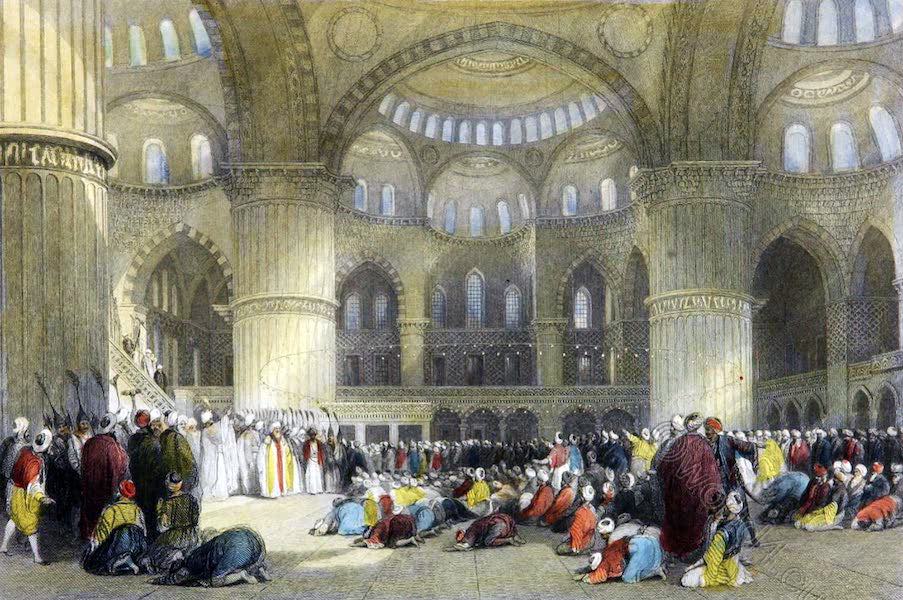
COLONNADE IN THE QUWWAT UL-ISLAM MOSQUE, DELHI.
FOR great beauty and at the same time variety of design, perhaps the columns in the mosque Quwwat ul-Islam of Delhi surpass anything of the kind among the ruined temples of British India.
This mosque is situated in the old town of Delhi, and not far distant from the wonderful stone column known as the Qutb Minar. As will be noticed in our accompanying photograph, no two columns of this structure are alike, and this peculiarity applies also to the almost endless number forming the colonnade surrounding the building.
In 1870, Lieutenant Henry Hardy Cole was deputed by the authorities of the South Kensington Museum to make casts of the most interesting of these relics, which may now be seen in that building.
From the inscription over the eastern gateway we gather from a record of Kutt-ud-din that he built the great Masjid from the materials of twenty-seven idolatrous Hindu temples, and that this took place during the guardianship of Abkar, son of Almed, A.D. 1199.
The portico of the Quwwat ul-Islam Mosque framing the courtyard area consists of columns/pillars from destroyed Hindu and Jain temples; on the second pillar on the left, the figure of a “Beautiful Girl” (surasundari) escaped Islamic iconoclasm.
In his “Architecture of Ancient Delhi,” Lieut. Henry Hardy Cole thus describes the portion of the mosque forming our illustration:-
“The most elaborate and effective pillars are in the colonnade at the east end of the courtyard. They are built up to the same height, but beyond this they have no precise resemblance one to the other. Each part of them differs as regards size, shape, and ornamentation; some are made up of as many as five detached pieces, but, as a rule, only the two shafts, base, and cap, are in separate blocks.
Crowning the columns in the centre of this cloister are a number of caps, with brackets arranged to support architraves at an angle of an octagon, and to sustain the central dome, so that in some, at least, of the pre-existing twenty-seven temples, the Jain method of constructing a roof was employed by the Hindus. The pillars in the courtyard are thirteen feet in height, and rest on a slab of stone two feet square and nine inches high. The interval in the length of the colonnade is seven feet seven inches and a half from centre to centre, and six feet one inch in the cross direction.
“The pillar in the foreground has a cap consisting of four brackets, to the under part of each of which figures or statues appear to have been fastened. The lower part of each bracket has a hole to receive the mortice of the figures or ornaments used.
“The shaft under this capital is, no doubt, wrongly placed. There is no support upon which the figure could have rested. In the lower shaft on the next column there are the remains of a small ledge or support for a figure, and it seems to me to be a reasonable surmise that such a shaft as this would have been more appropriate to the capital than the one which at present is there.”
Descriptive Article by Walter B. Woodbury. Photographed by Shepherd.
Source: Treasure spots of the world: a selection of the chief beauties and wonders of nature and art by Walter Bentley Woodbury (1834-1885); Francis Clement Naish. London: Ward, Lock, and Tyler, Paternoster Row, 1875.
Continuing
Discover more from World4 Costume Culture History
Subscribe to get the latest posts sent to your email.






